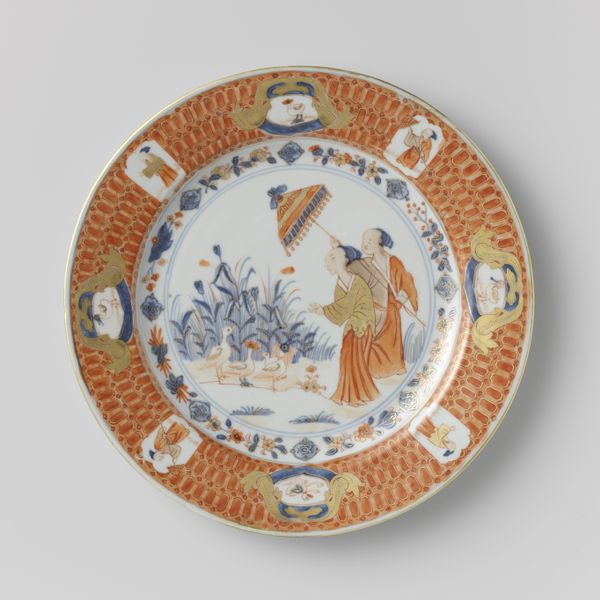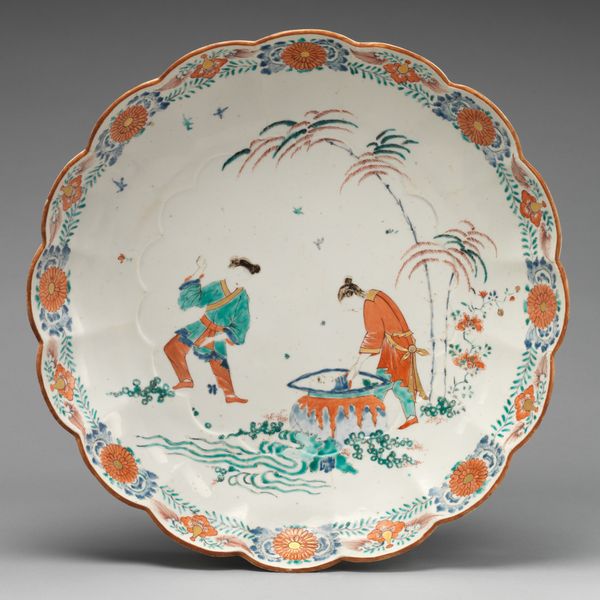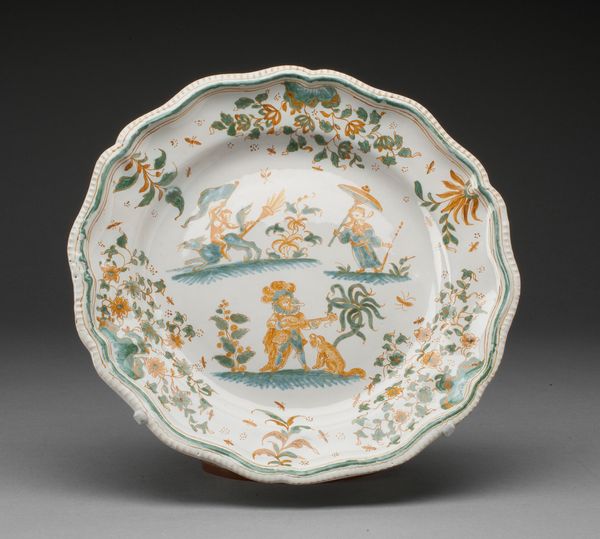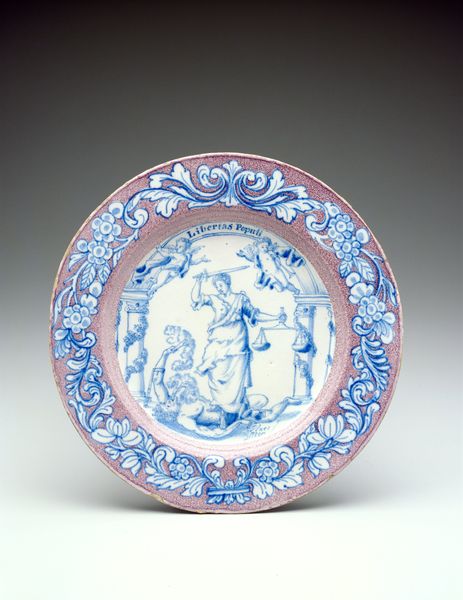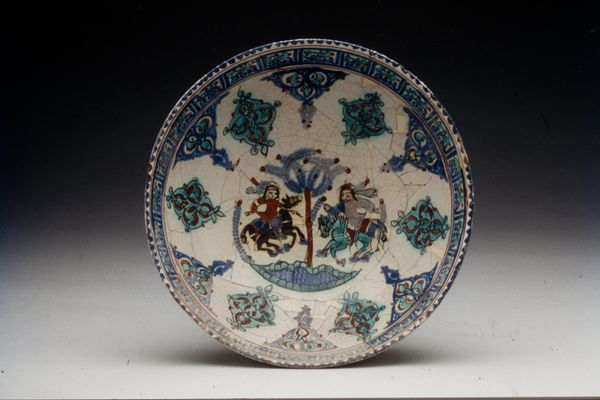
painting, ceramic
#
pottery
#
dutch-golden-age
#
painting
#
asian-art
#
ceramic
#
ceramic
#
genre-painting
Dimensions: H. 1 in. (2.5 cm); Diam. 9 3/8 in. (23.9 cm)
Copyright: Public Domain
Editor: This is "Dish Depicting Lady with a Parasol" by Cornelis Pronk, dating from 1734 to 1737. It’s a ceramic piece. The reddish-orange patterned border immediately draws my eye and frames a central scene with figures. It feels very decorative, almost like a stage. What formal elements strike you most prominently? Curator: Indeed. The structure here is compelling. Note how Pronk divides the visual field. The central image employs asymmetry, while the surrounding border balances ornate detail with repeating motifs. Consider the use of color: the cool blues and whites in the central landscape contrast sharply with the warm tones of the perimeter. The interplay generates tension. Editor: So you're suggesting that the visual arrangement is deliberately designed to create a dynamic effect? How does this impact how we read the imagery? Curator: Precisely. Look closely at the brushwork. The controlled lines defining the figures versus the almost stippled effect of the background creates different levels of texture. The variation encourages closer inspection and reveals Pronk's command over the ceramic medium. Can you see how the rendering affects your perception? Editor: I do now! I was initially focused on the narrative within the image, but you've drawn my attention to the intentional use of visual elements such as shape, line, and composition. It does force you to really examine the craftsmanship, not just the subject. Curator: And in doing so, we uncover the artist's strategy. The artwork uses this tension between image and technique, creating multiple layers of meaning. Editor: I see. By paying attention to the elements of form, like color and line, we can unpack even more about this piece. Thanks for broadening my understanding of it.
Comments
No comments
Be the first to comment and join the conversation on the ultimate creative platform.
